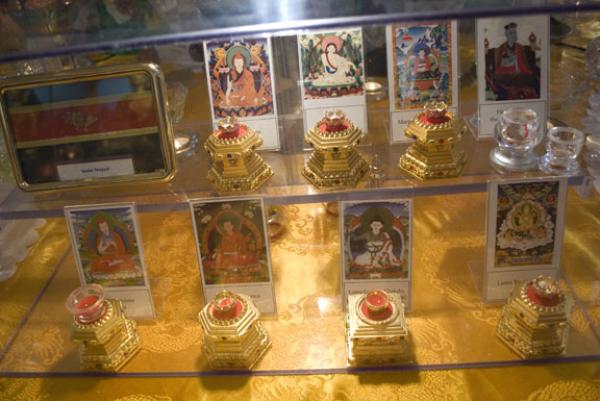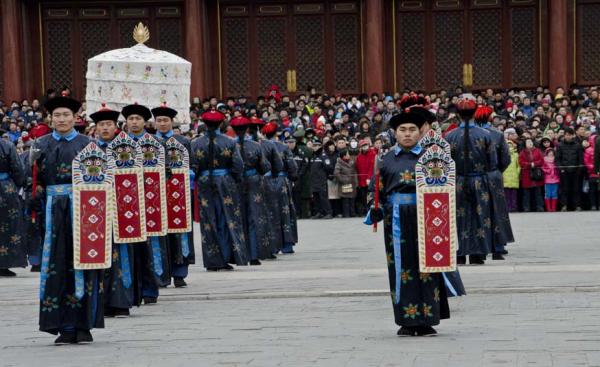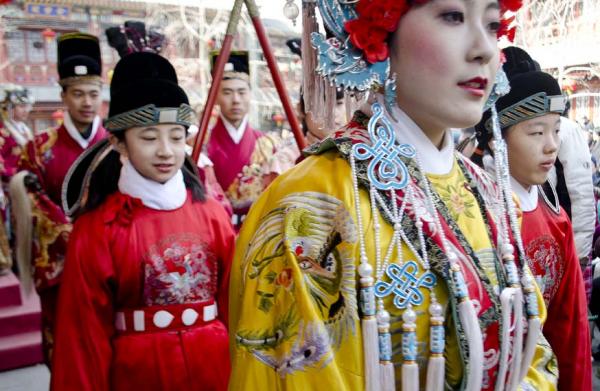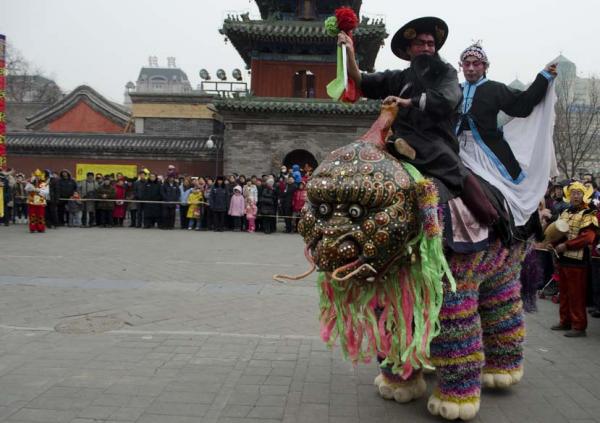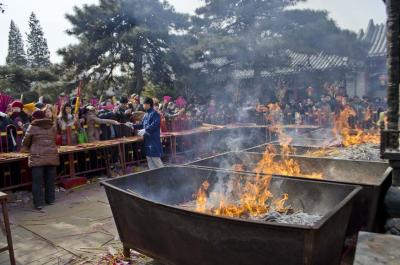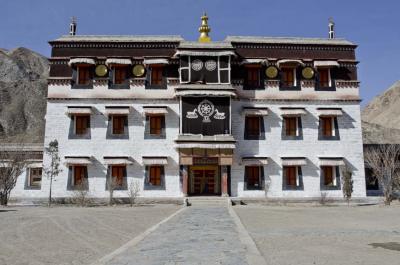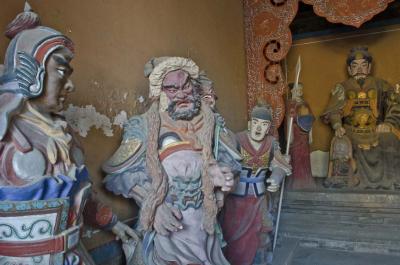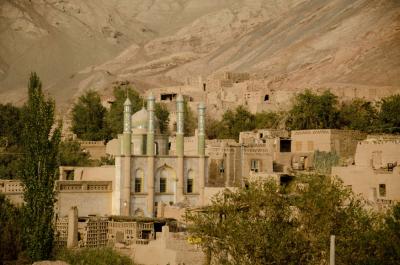Mantak Chia Training, San Francisco, CA
This is an opinion that may cause throbbing of veins and empurpling of complexions but here goes: being a healer is a path of dimensions. I feel that this is something I should qualify now. I therefore urge you to understand that I’m not about to engage that bodywork sessions need to have divine intervention to have healing, and I’m not saying that a spa with a bathroom bigger than your entire apartment isn’t marvelous for healing (it is). The energetic of physical healing is a given. It’s recognizing the problem, and breaking bad habits to heal that is tricky. Mantak Chia’s Universal Healing Tao system integrates a system of therapeutic energy bodywork and meditations designed to invigorate the energetics of the physical body by slapping, exercising, massaging, and meditating deeply on the organs and their functions. I attended a two day Chi Nei Tsang Workshop and also a third day of darkroom meditation during his North America tour through San Francisco Bay Area. His center is in Chiang Mai, Thailand, at the retreat center called Tao Garden Health Spa and Resort, where there are Universal Healing Tao courses and workshops.
Right now, I’m pretty healthy. My body is slim and somewhat muscular, and a metabolism which doesn’t really let me gain wait no matter how much I eat or drink. Every now and again I notice beneath the surface of my body there are rubbery dendritic knots, lumpy organs, and clusters of dead cells. I turn twenty nine years old next month, and it’s time to shake it off!
I’m talking specifically about what has become energetic therapy as you generally see- or, I’m willing to bet, far more often ignore- in the depths of your physical body. To an even greater degree than other visualizations of an increasingly healthy society, Mantak Chia’s works are beholden to the idea that energy in the body called Qi, which gives your organs direction and fluids movement, is the root cause of disease in the body when it becomes stagnant, deficient, or blocked. The workshop ties everything into a general theme that macrocosmic Qi that enters the body and dynamically flows through the tips of the extremities and expands to form a river into the internal organs via channels. These Qi channels receive the cosmic influence and transmit it throughout the body.
In addition, medical practices of Mantak Chia’s Life Force Massage in Taoist healing are firmly dissected into medical books on Chi Nei Tsang, Qi Gong, Acupuncture, etc. Hearing him give a seminar was reminiscent of my experiences in the biology department at the university learning anatomy and physiology, with many informational slides showing direction of the lymph, the soaz muscle, or the organs and the corresponding Chi Nei Tsang points.
The differentiation was made between the upper brain in our head, and a lower brain in our abdomen. This lower brain can upset the upper brain. Emotional experiences are recorded in the second lower brain. The small intestine has many neurons. Liver is connected to anger. The gallbladder is linked to jealousy/envy. Anger produces more cholesterol that overloads the liver. Hatred is a block in the pericardium and can collect into the bone. Pancreas rooted in worry. Massage in the abdomen is beneficial for uncovering blockages that are binding the chemicals of the emotions to our bodies.
During the seminar we practiced the Chi Nei Tsang massage techniques on each other. The first day was abdominal massage focusing on techniques for clearing blockages in the intestinal tract, and massaging the rib cage. We started by pulling the feet away from the body, rocking the body, shaking it loose, and rocking the hips. The massage began at a heart point between the solar plexus and belly button, and finding a pulse on the left side. Rocking and spiraling that pulse point to get it loose. It will often have tangles, tension and knots. Sometimes the knot is as hard as a rock. Different rhythms of massage will release the pulses. A full detox program will release toxins from deep inside. The Tao Gardens program has a full detox program, and recommends 4 colonics before beginning Chi Nei Tsang massage therapy. There is another pulse in the upper thigh for the femoral artery, and it can be deep. Hold these pulses for thirty six counts. Close and open the pulse points. The entire purpose of doing this is to open the Wind Gate. The Wind Gate is called king of the navel because once it is open everything moves. So there are pulses in the belly button that radiate energy out to the left kidney, heart, right kidney, sexual center, intestine, stomach, spleen, liver/gallbladder, and intestine. These pulses are each massaged around the navel, working the area in between the solar plexus and navel, kneading it and rubbing it. In the diaphram, we massaged the ribcage with a one finger technique, going through the ribs one by one.
The blood that oozes beneath my veins was being visualized into beads which moved through my body like a handful of scattered rubies. I closed my eyes and my mind was going through the depths of flesh, within through to the organs, throat, eyes, inner thigh, and femoral arteries. Travelling through the dimensions of my body in my mind to heal and focus on any disease manifesting, and inside, the sphincter muscle at the top of my intestine dialated, looking remarkably similar to a waiting toothless mouth. The dark tube inside palpitated slowly. Being kneaded by my massage partner like a piece of dough, moving around the organ walls beneath muscle membranes, and sending radiant fingers probing down through the navel cavity. The navel cavity radiates out to all of the other organs. These were the organs which produced the various nutrient fluids circulating through the ducts, sustaining the layers, and glands of the body.
The second day we got into going deeper into abdominal massage by going through the naval and massaging the reproductive and area around the sexual organs which is called karsai nei tsang. First we started with a 5 finger technique of squeezing the hands together at the fingertips and sucking in the face, and putting the fingers in an okay mudra in front of the face and pulling energy in through the hair. The naval is a sensitive area and will remind us to our birth experience, which for most people is traumatic because they cut the umbilical cord so directly. In Asian forms of medicine, the mother bites off the umbilical cord, it’s burned off, or the mother and baby stay connected for up to 10 days and all of the stem cells go back into the bodies and the cord falls off. This is called lotus birthing in many circles. The navel goes into 360 degrees connecting to every organ and gland. We were using our thumbs to pull away the belly button in all directions. We were trained to relieve the tightness of this area, and use our elbow technique to relieve the tension there. We were using our hands and scooping the area of the reproductive organs to clear the blood vessels. We were following the major veins that flow through this area on the right and left of the groin area. We were scooping inside and outside of the hip. This can invigorate a frigid impotent reproductive system. Mantak Chia was telling us that blockages here feel like sand. The penis has abundant blood vessels and the erection comes from blue blood. Blocked in capillaries we see heavy metals in the vagina. Testicles get blocked. Blocked blood vessels cause a lot of trouble including loss of memory, impotence, back pain, prostate gland contraction. Apparently, Dao Gardens has a reproductive massage program that deeply works the reproductive organs in all of the orifices.
Afterwards, the practice Mantak Chia gives for letting energy go into the ground by putting the hands on the tree. The tree can take sick energy out. Thai like evergreen tree. Sitting like the Buddha next to the tree and the energy cycles between us and nature.
We also participated in a dark room meditation which at Dao Gardens is a 9 month program of complete darkness. There is a strong release of Melatonin, DMT, and feeling a separation of the soul and physical. In dark room meditation, the moment of death, the pineal gland releases DMT. He’s saying that during this time the inner child can be reborn, and there is a lot of sleep, and calming the mind and heart in the dark. There is a dark violet light that is projected on you, which is the highest frequency light. See past life with indigo child, through this reincarnation. Similar to an ayahuasca journey in South America, there are similar patterns and with dark room meditation there is the same effect and drawing and pictures look like a God in South America.
Mantak Chia’s lectures involved a practice session where he begins talking about how saliva activates our hormones, blood, and sexual energy. He emphasized that chewing food for a long time is beneficial to get the qi of the saliva. Beginning with a grounding exercise with the dragon tail down to bring energy up to the sacrum from the earth. Activate the sacrum and breathing. Earth energy comes up, and wraps around the sacrum and breathing into that activate the cranial pump by slapping at occipital bone. When the third eye opens meditate on the heart. We began holding the energy around our perineum and holding it like a ball, spinning around this perineum collection point. We then started to activate the kidney fire by gathering the jing energy down in the pernium, and the essence of the jing is stored there. Activating the heart and lung fires also and feeling the courage, righteous feelings, joy and happiness. This process involves steaming the organs, various sphincter muscles being expanded and gripped, producing tight seals directing the energy up the spine. The temperature of burning a “fire” and creating “steam” inside increased, burning like a magnesium flare, consuming muscles, organs, and bone alike. Following by balancing it with a water element, I felt my muscles slacken, an indrawn breath reveals the water element washing over my body quenching the thirst which gave vitality to every cell. Sensations flowed in my mind, light energy working through in perfect fusion. I arise and my entire body is tingling with a golden light suspended in the crystal room. I could feel my facial muscles shifting into a small smile, now my energy level was high.
This observation is like everything else I write about, rooted in a strictly personal preference- it may well be that millions of people enjoy meditating and massaging their organs and focusing their minds on relieving the physical blockages in their body. I find it to be a great practice to do on everyone. The knowledge that Mantak Chia is revealing about energetic physiology is real, and it works to heal.


